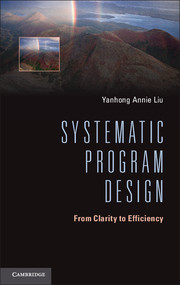5 - Rules: iterate, incrementalize, and implement
Published online by Cambridge University Press: 05 June 2013
Summary
Many complex computational problems are most clearly and easily specified using logic rules. Logic rules state that if certain hypotheses hold then certain conclusions hold. These rules can be used to infer new facts from given facts. Example applications include queries in databases, analysis of computer programs, and reasoning about security policies. Datalog, which stands for Database logic, is an important rule-based language for specifying how new facts can be inferred from existing facts. Its fixed-point semantics allows the computation of the set of all facts that can be inferred from a given set of facts. It is sufficiently powerful for expressing many practical analysis problems.
While a Datalog program can be easily implemented using a logic programming system, such as a Prolog system, evaluated using various evaluation methods, such as well-established tabling methods, or rewritten using transformation methods for more efficient evaluation, such as using the well-known magic-sets method, these implementations are typically for fast prototyping. The running times of Datalog programs implemented using these methods can vary dramatically depending on the order of rules and the order of hypotheses in a rule. Even less is known about the space usage. Developing and implementing efficient algorithms specialized for any given set of rules and with time and space guarantees is a nontrivial, recurring task.
Information
- Type
- Chapter
- Information
- Systematic Program DesignFrom Clarity to Efficiency, pp. 117 - 150Publisher: Cambridge University PressPrint publication year: 2013
